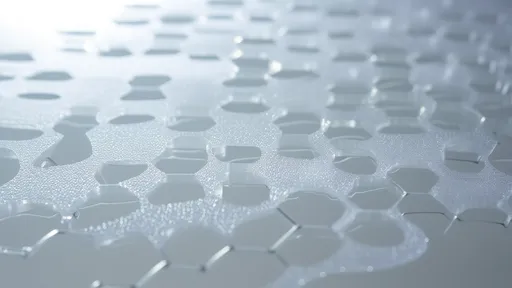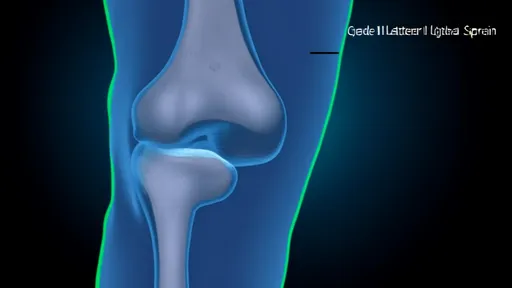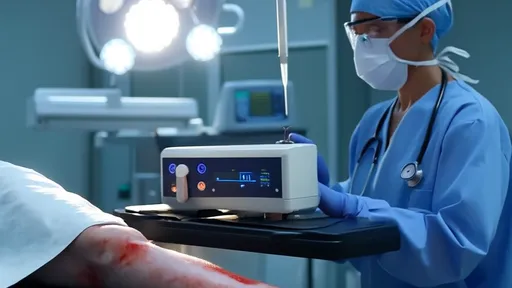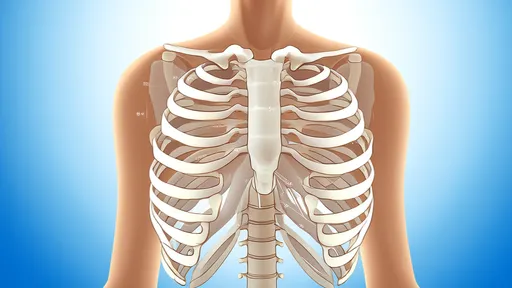Ligamentous laxity caused by overstretching is a complex clinical condition that often requires advanced imaging for accurate diagnosis. Magnetic resonance imaging (MRI) has emerged as the gold standard for evaluating ligament integrity, providing unparalleled soft tissue contrast that allows clinicians to assess the degree of ligament injury and subsequent laxity. This imaging modality reveals not only the macroscopic tears but also subtle microstructural changes that occur when ligaments are stretched beyond their physiological limits.
The pathophysiology of ligament overstretching involves a cascade of biomechanical failures within the collagen matrix. When ligaments experience excessive tensile forces, the normally parallel collagen fibers become disorganized, leading to decreased tensile strength and increased joint instability. MRI beautifully captures this disorganization through T2-weighted sequences, where increased water content in the damaged ligaments appears as hyperintense signals. These findings correlate strongly with clinical assessments of joint instability and often predict long-term functional outcomes.
Chronic ligamentous laxity presents unique challenges in MRI interpretation. Unlike acute injuries with clear edema and hemorrhage, chronic cases demonstrate more subtle findings such as ligament thinning, wavy contours, and abnormal signal intensity. The magic of modern MRI lies in its ability to differentiate between these chronic changes and normal anatomical variants, a distinction that profoundly impacts treatment decisions. Radiologists must pay particular attention to the ligament's insertion sites, as abnormalities here often indicate longstanding instability.
Functional MRI techniques are pushing the boundaries of ligament assessment. Some specialized centers now perform stress MRI, where images are acquired with joints under controlled load. This approach can reveal dynamic instability that would otherwise go undetected in conventional static imaging. The ability to visualize how ligaments behave under stress provides invaluable information for athletes and patients with recurrent joint dislocations, offering a window into their functional limitations that static images cannot provide.
The clinical implications of MRI findings in ligamentous laxity extend far beyond diagnosis. Detailed imaging characteristics help stratify patients into different treatment categories - from conservative management to surgical reconstruction. For instance, the presence of intact but elongated ligaments might indicate a candidate for regenerative therapies, while complete ruptures with retraction typically require surgical intervention. This personalized approach to management, guided by MRI findings, represents a significant advancement in musculoskeletal care.
Emerging MRI technologies promise even greater insights into ligament pathology. Ultra-high-field 7T MRI scanners and specialized cartilage sequences are beginning to reveal the microscopic changes that precede macroscopic ligament failure. These advancements might eventually allow clinicians to identify at-risk individuals before they develop symptomatic laxity, ushering in an era of true preventive medicine for joint instability disorders. The future of ligament imaging lies not just in diagnosing existing damage, but in predicting and preventing it.
While MRI provides exceptional anatomical detail, its interpretation requires careful correlation with clinical findings. Some patients demonstrate significant imaging abnormalities with minimal symptoms, while others have debilitating instability with relatively normal-looking scans. This paradox highlights the complex relationship between structural damage and functional impairment, reminding clinicians that imaging represents just one piece of the diagnostic puzzle. The art of medicine lies in synthesizing imaging data with the patient's unique history and physical examination.
Rehabilitation protocols are increasingly being guided by serial MRI examinations. By tracking ligament healing over time, therapists can customize recovery programs to match the tissue's biological readiness. This approach has revolutionized post-injury management, particularly for athletes who often push their bodies to the limits. The ability to visualize healing progression helps prevent premature return to activity - a common cause of reinjury and chronic instability.
The economic aspects of MRI for ligament assessment cannot be overlooked. While the upfront costs are significant, the long-term savings from accurate diagnoses and targeted treatments are substantial. Misdiagnosed or undertreated ligamentous laxity often leads to progressive joint degeneration, with its associated costs of arthritis management and potential joint replacement. In this context, high-quality MRI represents not just a diagnostic tool, but a wise investment in long-term musculoskeletal health.
As our understanding of ligament biology deepens, so does our appreciation of MRI's role in managing these injuries. The technology continues to evolve, with each advancement providing new insights into the complex world of connective tissue pathology. What began as simple anatomical imaging has transformed into a sophisticated tool for functional assessment, treatment planning, and outcome prediction. For patients suffering from the debilitating effects of ligamentous laxity, these advances offer hope for more accurate diagnoses and more effective treatments.
The world of fitness is constantly evolving, with new trends emerging from every corner of the globe. While some workouts stand the test of time, others are so peculiar they make you wonder - who thought this was a good idea? From goat yoga to face slapping workouts, humanity's quest for better health has spawned some truly unconventional practices that blur the line between genius and madness.
The fitness world is buzzing with excitement over the latest viral workout trend—Divine Beats Training 2.0. This high-energy program combines pulsating electronic dance music with scientifically optimized movement patterns, creating what enthusiasts call "the first workout that feels like a nightclub experience." Unlike traditional exercise routines, this system uses precisely timed musical drops and bass-heavy beats to trigger explosive physical responses from participants.
In an era where office workers spend increasingly long hours tethered to their desks, a peculiar fitness trend has emerged from Japan that turns mundane stationery into tools for wellness. The "Stationery Workout" movement, particularly its signature "Ruler Balance" technique, has gained surprising traction among white-collar professionals seeking discreet ways to stay active during marathon work sessions. This unconventional approach transforms everyday office supplies into instruments of physical conditioning, blending productivity with subtle exercise.
In the age of social media dominance, fitness influencers have created countless viral workout trends that promise quick results. However, many of these popular movements can cause serious injuries when performed incorrectly or excessively. Medical professionals and physical therapists are increasingly warning about the dangers lurking behind some deceptively simple-looking challenges.
Fitness gaming has taken the world by storm, and Nintendo's Ring Fit Adventure stands out as one of the most innovative entries in this genre. While many players enjoy the game at face value, there's a hidden layer of depth that few explore—the secret intensity settings. These undisclosed options can transform your workout, pushing you beyond the default limits. For those seeking a more challenging experience, unlocking these hidden features can be a game-changer.
The world of pet entertainment has taken a thrilling turn with the rise of obstacle course designs tailored specifically for feline athletes. Cat owners and enthusiasts are increasingly embracing the concept of creating dynamic, engaging, and challenging courses that cater to their pets' natural instincts. These obstacle courses, often referred to as "cat obstacle course" in certain communities, blend creativity with functionality to provide cats with both physical exercise and mental stimulation.
In today's fast-paced world where stress has become an inevitable part of daily life, people are constantly seeking unconventional yet effective methods to alleviate tension. One such surprising but increasingly popular technique involves the use of ordinary bubble wrap - that ubiquitous packaging material that most of us instinctively pop when it comes our way. What began as an unconscious fidgeting behavior has evolved into structured stress relief training programs harnessing the therapeutic potential of this simple material.
The ancient Chinese literary masterpiece Dream of the Red Chamber is not merely a tale of aristocratic decline—it is also a treasure trove of traditional wellness practices. Among its pages lie subtle references to health-preserving exercises, many of which were practiced by the elite women of the Jia household. Today, these centuries-old movements are being reinterpreted through a modern lens, offering urban dwellers an unexpected bridge between classical literature and contemporary self-care.
The growing popularity of energy drinks has sparked significant interest in their physiological effects, particularly on cardiovascular health. Recent studies utilizing electrocardiogram (ECG) monitoring have begun to unravel the complex relationship between these caffeine-laden beverages and heart function. As millions worldwide consume energy drinks for a quick boost, researchers are investigating whether these products may trigger subtle yet meaningful changes in cardiac rhythm.
Walking is often touted as one of the simplest and most effective forms of exercise, accessible to almost everyone regardless of fitness level. However, as the trend of hitting extreme step counts—such as 30,000 steps a day—gains popularity, concerns about joint wear and tear have emerged. While moderate walking is beneficial, pushing the body to such extremes may come at a cost, particularly for the knees, hips, and ankles. This raises an important question: how much is too much when it comes to daily steps?
The crisp morning air, the quiet streets, and the promise of a fresh start make dawn an irresistible time for runners. Yet beneath the serenity of sunrise jogs lies a hidden danger few anticipate – exercise-induced syncope, particularly when running in a fasted state. This phenomenon isn’t merely about "feeling lightheaded"; it’s a temporary loss of consciousness that can lead to catastrophic falls or accidents. As more people adopt fasting routines or squeeze workouts before breakfast, understanding why this happens and how to respond could mean the difference between a close call and a tragedy.
Ligamentous laxity caused by overstretching is a complex clinical condition that often requires advanced imaging for accurate diagnosis. Magnetic resonance imaging (MRI) has emerged as the gold standard for evaluating ligament integrity, providing unparalleled soft tissue contrast that allows clinicians to assess the degree of ligament injury and subsequent laxity. This imaging modality reveals not only the macroscopic tears but also subtle microstructural changes that occur when ligaments are stretched beyond their physiological limits.
For decades, the idea of converting fat into muscle—or vice versa—has been a topic of fascination in fitness and medical communities. While the concept is often oversimplified in popular media, the biological mechanisms behind this transformation are complex and deeply rooted in cellular metabolism. Understanding how the body regulates the interplay between adipose tissue and muscle mass requires delving into the biochemical pathways that govern energy storage and utilization.
The medical community has long grappled with the complexities of localized cryogenic burns, a unique injury pattern that occurs when skin and underlying tissues are exposed to extreme cold. Unlike thermal burns which follow more predictable pathways, cryogenic injuries present distinct clinical challenges due to their delayed presentation and progressive tissue damage. Recent multicenter studies have shed new light on the pathophysiology and optimal treatment approaches for these frostbite-like injuries caused by industrial accidents, medical cryotherapy mishaps, and improper handling of liquefied gases.
The medical community has long been fascinated by the intricate relationship between skeletal deformities and their underlying causes. Among these, costal arch deformities, particularly those involving the lower ribs, present a unique challenge for both diagnosis and treatment. Often referred to as "corset rib syndrome" or "lower rib cage deformity," this condition manifests as an abnormal inward curvature of the lower ribs, frequently accompanied by chronic pain and respiratory limitations. The condition's nomenclature stems from its historical association with tight-lacing corsets, though modern cases often arise from congenital factors or trauma.














